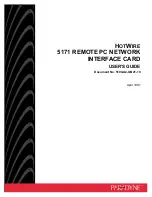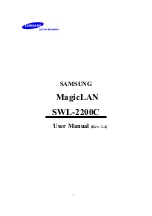
MDE-LEDI-NETWORK-TDS-4099V3.0
19
E
NG
LI
S
H
3.4.1 Client/Server mode
This mode is the most widely used as it is compatible with conventional network
infrastructures and is highly accurate.
The client regularly evaluates the current offset in relation to its servers. This measurement
is done using a message exchange mechanism as shown in the following diagram:
When the data contained in the server response and the time of receipt, the NTP client
calculates the offset of its clock by subtracting the server date from its clock to compensate
for transmission delays. For greater accuracy by simply sub
tracting the server’s sending date
from the client’s receiving date or the server’s receiving date from the client’s sending date,
the client can obtain the sum of the offset and transmission delay, but this would cause an
error in correcting its clock. In order to remove the transmission time from the result, the
client subtracts the average of the two server dates. The result obtained is equal to the offset
plus an error equal to half the difference between the two transmission times.
On average, over several acquisitions of the offset and over a single network, this error is
zero. The client can therefore increase the accuracy as the exchanges progress.
Starting from the second offset calculation, each calculation estimates the drift of the client
clock. Depending on the client, the drift can be used to regulate the clock in order to reduce
future drifts.
















































